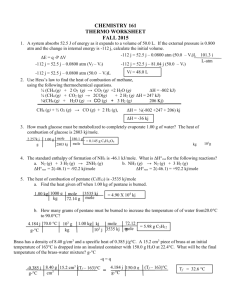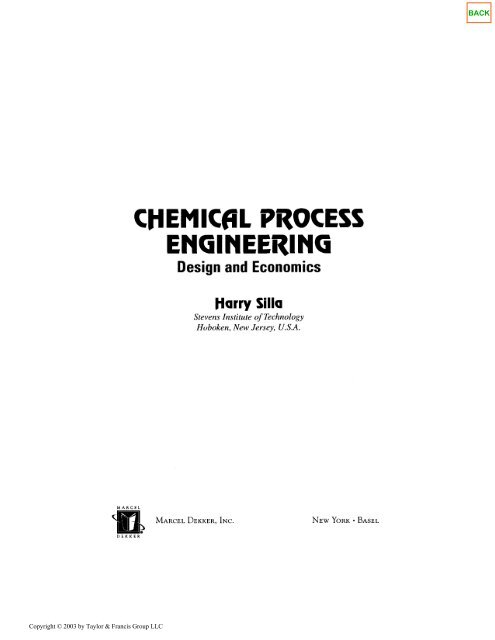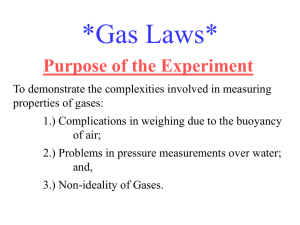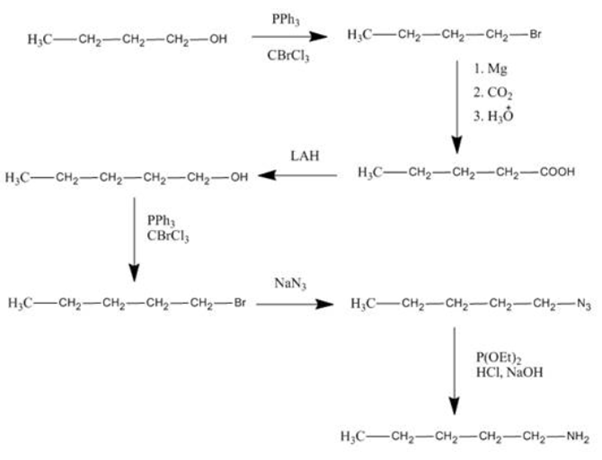
The thermodynamic treatment of data obtained from the study of the liquid-vapor equilibria at constant pressure differs from that used in constant-temperature experiments in the treatment of the standard states. If the points of tangency are connected by a straight line lying in the plane at any position of the plane, a ruled surface is derived. The projections of the loci of the points of tangency are represented by the lines al and bs in Figure 5.5. Thus, a plane, tangent to the solid and liquid surfaces, may be rolled along these surfaces. The characteristics of the primary surfaces and the derived surface for the solid-liquid equilibria and the solid-vapor equilibria are identical to those for the liquid-vapor equilibria with the exception that no critical phenomena have ever been observed in these two equilibria. A mixture of two liquids can exhibit nonideal behavior by forming an azeotropic mixture (a constant boiling mixture). Negative deviations result from the opposite effects ( total pressure lower than that computed for ideality).

Positive deviations (for binary mixtures) occur when the attraction of like molecules, A-A or B-B, are stronger than unlike molecules, A-B ( total pressure greater than that computed for ideality). Deviations from Raoult s law may be positive or negative. Few systems are ideal and most show some deviation from ideality and do not follow Raoult s law.

In all the above discussions regarding liquid-vapor equilibria we have assumed that our representative systems were ideal, that is, there are no differences in attractions between molecules of different types.

Challenges clearly remain in the measurement of this species. These approaches may provide more definite specificity for HN03. A laser-photolysis, fragment- fluorescence method (47) and an active chemical ionization, mass spectrometric technique (48) were recently reported for this species. These studies clearly indicate that the intercompared techniques do not allow the unequivocal determination of nitric acid in the atmosphere. The intercomparisons found differences of the order of a factor of 2 generally, and up to at least a factor of 5 at levels below 0.2 ppbv. These equilibria can be disturbed by the sampling process these disturbances lead to negative or positive errors in the determination of the ambient vapor-phase concentration. The in situ measurement of this species has proven difficult because it very rapidly absorbs on any inlet surfaces and because it is involved in reversible solid-vapor equilibria with aerosol nitrate species. Several formal and informal intercomparisons of nitric acid measurement techniques have been carried out (43-46) these intercomparisons involve a multitude of techniques. One can also consider the liquid/vapor equilibria in a simple (c = 1) two- phase system with /Xvap 7 liq. Note 1 An alternative definition of critical solution point refers strictly to liquid-vapor equilibria. (1948) Densities and liquid-vapor equilibria of the system ethanol-isooctane (2,2,4-trimethylpentane) between 0 and 50°. Kretschmer, C.B., Nowakowska, J., Wiebe, R. Liquid-Vapor Equilibria using the Wang-Landau Algorithm. Extracted from Reichardt, pages 501-502.The liquid -vapor equilibria, along the vaporization curve is expressed as. Extracted from Reichardt, page 495.Ĥ Threshold limits for exposure.

Table 1 arranged alphabetically, Table 2 arranged according to increasing polarityĢ The values for relative polarity are normalized from measurements of solvent shifts of absorption spectra and wereĮxtracted from Christian Reichardt, Solvents and Solvent Effects in Organic Chemistry, Wiley-VCH Publishers, 3rd ed., 2003.ģ Snyder's empirical eluant strength parameter for alumina. The tables below were posted (10/23/98) and revised (07/28/09) and updated (04/10/10) by Steve Murov, Professor Emeritus of Chemistry. įor much more complete information on physical and safety properties of solvents, please go to: For Spectra of Solvents, jump to the bottom of this p. Values for relative polarity, eluant strength, threshold limits and vapor pressure have been extracted from: Christian Reichardt, Solvents and Solvent Effects in Organic Chemistry, Wiley-VCH Publishers, 3rd ed., 2003. The values in the table below except as noted have been extracted from online and hardbound compilations.


 0 kommentar(er)
0 kommentar(er)
